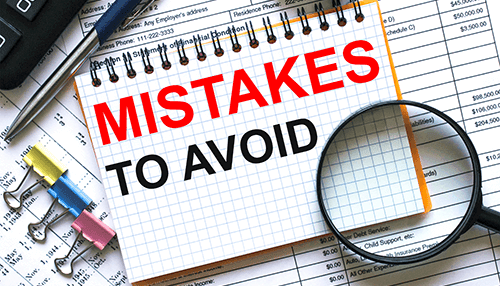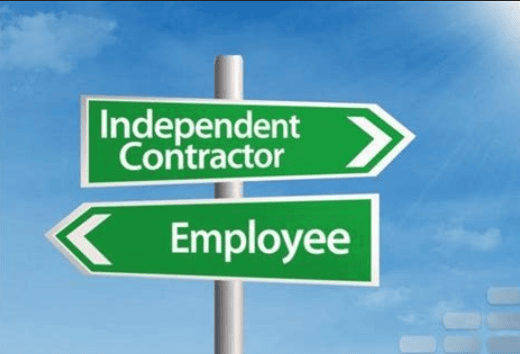Fall is a busy season for Canadian small business owners. Between managing cash flow, preparing for year-end, and planning for the holidays, payroll often gets pushed to the bottom of the list.
But here’s the problem: payroll is not just about paying employees—it’s about staying compliant with CRA regulations, CPP/EI remittances, and year-end reporting.

Many Ontario businesses unintentionally make costly payroll mistakes in the fall.
The good news; With proactive planning, you can avoid penalties, save money, and keep your employees happy.

1. Missing Payroll Remittance Deadlines
Fall often comes with cash flow crunches—back-to-school slowdowns, preparing for holiday expenses, or slow receivables. Many businesses delay or forget their CRA source deduction remittances (CPP, EI, and income tax). Missing deadlines leads to costly penalties (up to 10% of the amount due) and interest charges.
Example: A London café with 12 employees missed their September payroll remittance by just 4 days. CRA assessed a penalty of over $800—money that could have covered an extra staff shift during the busy Thanksgiving weekend.
Solution:
Automate Payroll: Use systems like QuickBooks Payroll to auto-calculate and auto-remit deductions.
Set Reminders: October is a great time to build a year-end compliance calendar with all CRA deadlines.
Pro Tip from a CPA: If cash flow is tight, consider payroll frequency planning (e.g., moving from weekly to biweekly pay) to reduce pressure.

2. Incorrect Classification of Workers (Employee vs. Contractor)
The rise of gig workers and contractors makes it tempting to pay people as “independent contractors” rather than employees. But if CRA later decides a worker should be classified as an employee, you could be on the hook for unpaid CPP/EI contributions—plus penalties.
Example: A landscaping business in Forest City hired seasonal workers for fall cleanup and paid them as contractors. CRA later ruled they were employees due to the control and tools provided. The owner had to pay two years of back CPP and EI, amounting to over $12,000.
Solution:
Know the CRA Tests: CRA looks at factors like control, ownership of tools, and chance of profit/risk of loss.
Put It in Writing: Use clear contracts that align with the reality of the work.
CPA Insight: Review your staffing mix each fall—especially if hiring temporary staff for the holiday season.

3. Not Accounting for Vacation Pay and Statutory Holidays
Fall includes Thanksgiving and, for some businesses, early planning for holiday pay in December. Small businesses often forget to add vacation pay (4% or 6% depending on tenure) or properly calculate statutory holiday pay. Mistakes here hurt morale and risk non-compliance with the Employment Standards Act (Ontario).
Example: A retail store in Masonville shorted part-time staff on Thanksgiving statutory pay because schedules weren’t updated. Employees complained, leading to an audit and back pay owing.
Solution:
Use Payroll Software: Systems like QuickBooks and Wagepoint auto-calculate vacation/stat pay.
Maintain Clean Records: Always track hours worked leading up to statutory holidays.
Pro Tip: Budget for these costs in advance—October is the perfect time to factor holiday payroll into your Q4 cash flow plan.

4. Errors in Bonus and Commission Payments
Fall is when many businesses offer performance bonuses or commissions before year-end. The mistake? Forgetting to apply source deductions (CPP, EI, income tax) on these payments. Some employers also fail to report them correctly on T4 slips, creating compliance issues.
Example: A London marketing agency gave $2,500 bonuses to staff in November but didn’t withhold CPP/EI. At T4 time, CRA flagged the discrepancy, leading to penalties plus a headache of amended slips.
Solution:
Treat Bonuses Like Regular Income: Always calculate source deductions on bonuses.
Use “Bonus Method” Calculations: Payroll systems have settings to handle irregular payments correctly.
CPA Tip: If offering large year-end bonuses, consider splitting them between November and January to reduce withholding impact for staff.

5. Forgetting Year-End Payroll Planning
Fall is the last chance to prepare for year-end reporting. Many businesses forget to reconcile payroll records, confirm employee information (SINs, addresses), and align bookkeeping with payroll records. This leads to errors on T4s, missed deductions, and CRA queries in February/March.
Example: A contracting company didn’t update an employee’s address and SIN before year-end. The T4 bounced back, delaying filing and causing frustration for the employee.
Solution:
October Checklist: Review payroll accounts, reconcile CRA remittances, confirm employee data.
Work with a CPA: An accountant can cross-check payroll with your bookkeeping for accuracy.
Pro Tip: October is also the right time to consider owner-manager compensation planning (salary vs dividends).
Watch for CRA Payroll Audits

Keep Payroll Clean, Save Money, Stay Compliant
Payroll mistakes in the fall can snowball into bigger year-end problems. By being proactive in October, small business owners in London, Ontario can avoid penalties, keep employees satisfied, and protect cash flow heading into the holiday season.
At Bhundhoo Tax Professional Corporation, we help businesses:
Set up automated payroll and GST/HST systems.
Stay compliant with CRA rules.
Plan compensation strategies that save tax.
